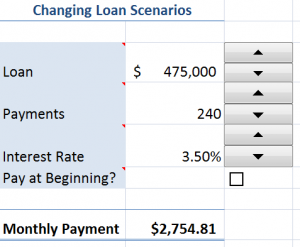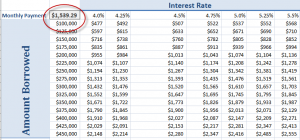If you are creating or modifying an Invoice Form in Excel, you will want to add a Combo Box Control to allow users to select products from a listing. The key in formatting your Combo Box Control is to choose the correct cell to contain the “Cell Link.”
Cell Link in Form Control
I think that you will benefit from “seeing how this is done” in this video lesson. I know that I always struggled with “reading about” Excel Form Controls. Once you see how important the “Cell Link” placement is, you will better understand how Combo Box Controls work.
Use INDEX Function
Once we have formatted the Combo Box, we need to be able to look up other values to place on our Invoice. In this example I demonstrate how to use the INDEX() Function to lookup the “Unit Price” for each product selected from the Combo Box list on the Invoice. As a best practice, I recommend that you use “Named Ranges” for the “array” that you Index. The INDEX() Function has three arguments:
- The ARRAY to Index – In this case our “named range” with three fields (Product Name, Unit Price, Cell Link)
- The ROW reference – In this case the cell in the ARRAY that contains our CELL LINK for the Combo Box
- Optionally, the COLUMN reference – in this case “2” for the 2nd Column in the ARRAY (Unit Price)
Let me know if my videos in this series have helped you to understand how to use Form Controls in Excel. It took me some time to figure out how they worked; I hope that I can save you some time and ease your frustration in apply them to your forms. Add your comments below or send me an email – danny@thecompanyrocks.com
Find Additional Videos for Form Controls in Excel
Form Controls include Option Buttons, Spinners, List Boxes and more. Here is a link to the other videos in my series on Form Controls in Excel.
Watch Tutorial on YouTube
If you prefer, follow this link so that you can watch this video on my YouTube Channel – DannyRocksExcels
Resources Available at My Online Shopping Site
I invite you to visit my new, secure online shopping site where you can Learn how you to “Master Excel in Minutes – Not Months!
 How to Add a Combo Box Control to an Invoice Form in Excel [ 8:01 ] Play Now | Play in Popup | Download (1645)
How to Add a Combo Box Control to an Invoice Form in Excel [ 8:01 ] Play Now | Play in Popup | Download (1645)

